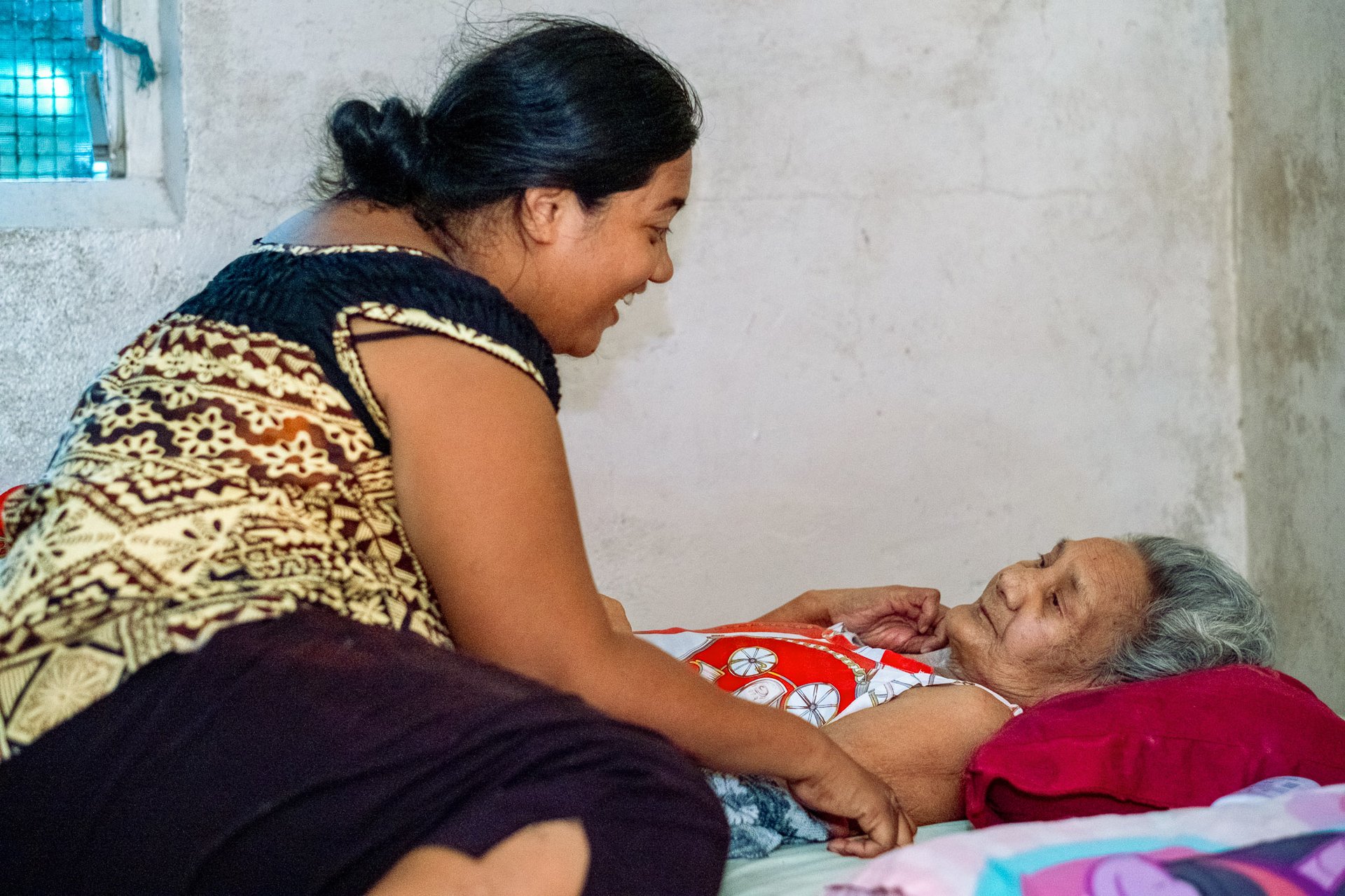OLD-AGE PENSIONS IN THE PACIFIC: BUILDING SECURITY FOR LATER LIFE
Old-age pensions in the Pacific: Building security for later life
Over the last two decades, a growing number of Pacific Island countries have introduced old-age pensions, recognising their role in reducing poverty and supporting dignity in later life. Kiribati, Nauru, Niue, Tuvalu, Tonga, Samoa, Fiji, and the Cook Islands have all established pension schemes and other countries are considering the introduction of such schemes.
This blog looks at which Pacific countries are leading the way with their old-age pensions, how countries can expand their pensions over time and how they benefit women.
What types of pensions exist?
There are two types of pensions.
A contributory pension is a retirement income scheme that requires regular contributions during a person’s working life, usually from the employee and their employer, and in some cases also from the government. The accumulated contributions (often pooled and invested) entitle the worker to receive benefits when they reach retirement age.
These schemes are generally mandatory for workers in the formal sector, though in some countries voluntary participation is also available to self-employed or informal sector workers.
In contrast, non-contributory pensions (also known as budget-financed pensions) are financed by governments and available to older people regardless of their work history.
This makes them especially important in the Pacific, where large numbers of people work in the informal economy as farmers, fishers, or traders and often do not have retirement savings.
These regular and predictable payments from governments can make a major difference—helping older people cover basic needs like food and healthcare, reducing poverty, and affirming their valuable role in the family and in broader society.
Kiribati’s universal approach
Kiribati has been a trailblazer in the Pacific.
In 2004, it introduced an elderly benefit guaranteeing income support for all citizens over the age of 70. The eligibility age has since been reduced to 60 years.
The scheme is available to everyone, including women and men irrespective of work history or previous employment.
Since 2019, Kiribati has significantly increased its spending on the Senior Citizens Allowance (SCA), including by more than tripling the benefit level to AUD 100 per fortnight, benefiting 9,500 elderly I-Kiribati citizens.
Cook Islands’ long-standing model
The Cook Islands also stands out for its generous and long-running non-contributory pension, introduced in 1965.
It is available to citizens aged 60 and over, with only those already receiving the New Zealand pension considered ineligible.
Unlike many other Pacific pensions, the Cook Islands provides a relatively higher payment, significantly improving the living standards of older people.
People aged 60 – 69 years receive NZD 520 per month (AUD 450), and people over 70 years get NZD 720 (AUD 629) per month.
The scheme is celebrated domestically as a symbol of social solidarity, not just a financial transfer.
It has reduced poverty, promoted equality, and helped older people remain active and engaged in community life.
Start small and expand slowly: The Tonga case
Tonga provides a useful example of how Pacific countries can start small with a pension scheme and expand gradually.
When it first launched its social pension in 2012, it was available only to people aged 75 and above with a monthly payment of 65 TOP (AUD 41).
Over time, as the scheme became established and the government identified ways to fund its expansion, the eligibility age was progressively reduced, and today Tongans aged 66 and above receive the pension. People aged up to 79 years receive 100 TOP (AUD 56) per month, and people 80 years and over get 120 TOP (AUD 69) per month.
This gradual approach demonstrates how governments can balance affordability with inclusivity, ensuring that more older people benefit as the program matures.
Why pensions matter for women
Pensions have a particularly strong impact on women’s wellbeing in the Pacific.
On average, women live longer than men. Many women also spend much of their lives outside formal employment due to unpaid caregiving and community responsibilities, and the types of work they are likely to do, such as small market stallholders or farm workers. As a result, they are far less likely to accumulate savings or qualify for contributory pensions.
By guaranteeing income in later life regardless of work history, old age pensions provide women with a level of independence and security they may not otherwise have.
Regular payments allow older women to meet their basic needs, contribute to family expenses, and participate actively in community life.
In this way, old-age pensions are a powerful instrument for advancing gender equality and recognising the unpaid contributions women make throughout their lives.
Supporting ageing populations
In the Pacific, populations are gradually ageing as life expectancy rises and fertility declines.
Older people (60 years and over) accounted for 17.7% of the region’s population in 2022, a share that will grow to 19.7% by 2030 and 24.1% by 2050. The 80 years and over population is increasing even faster—from 3.1% in 2022 to 6.3% by 2050.
These demographic shifts bring major economic, social, and fiscal challenges, making the need for effective pension systems increasingly urgent.
As the Pacific prepares for an older future, inclusive and sustainable pensions will be critical to safeguarding dignity, resilience, and wellbeing for all.



